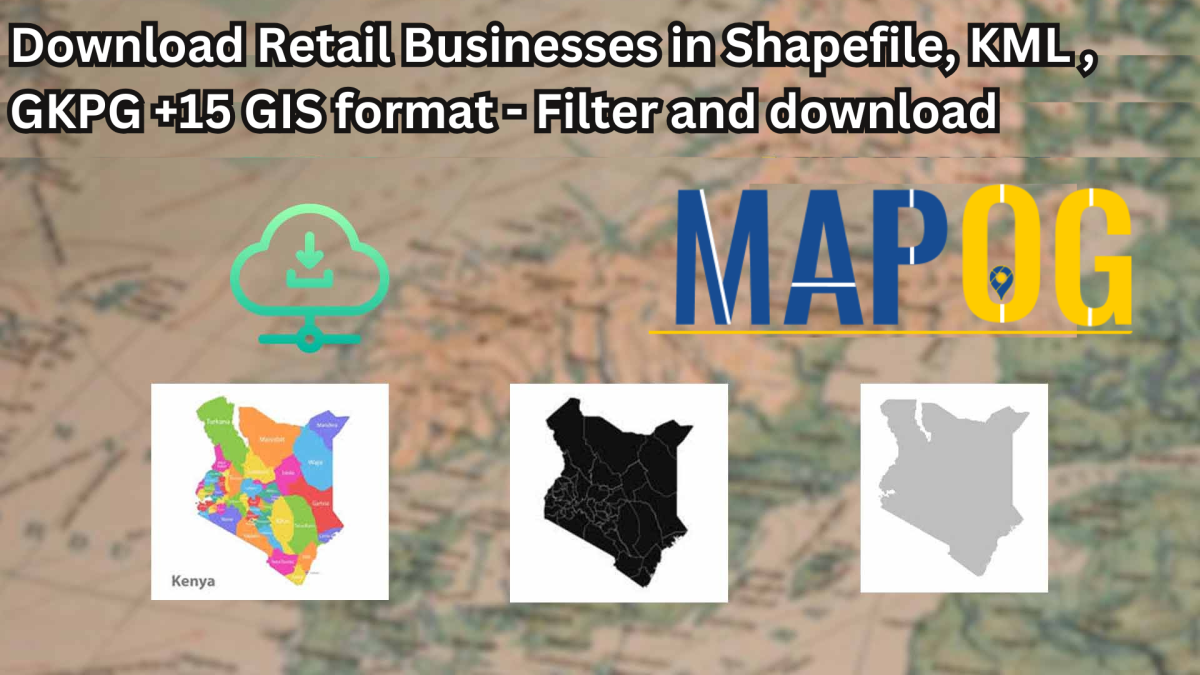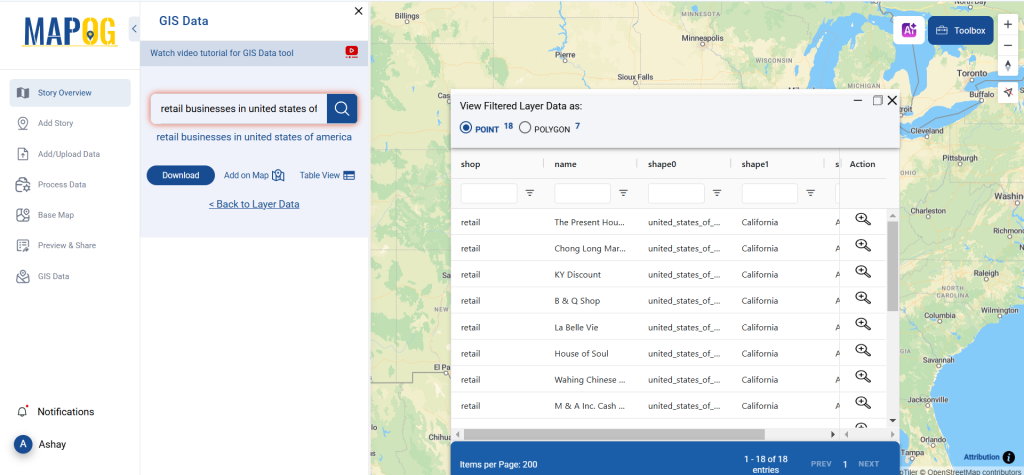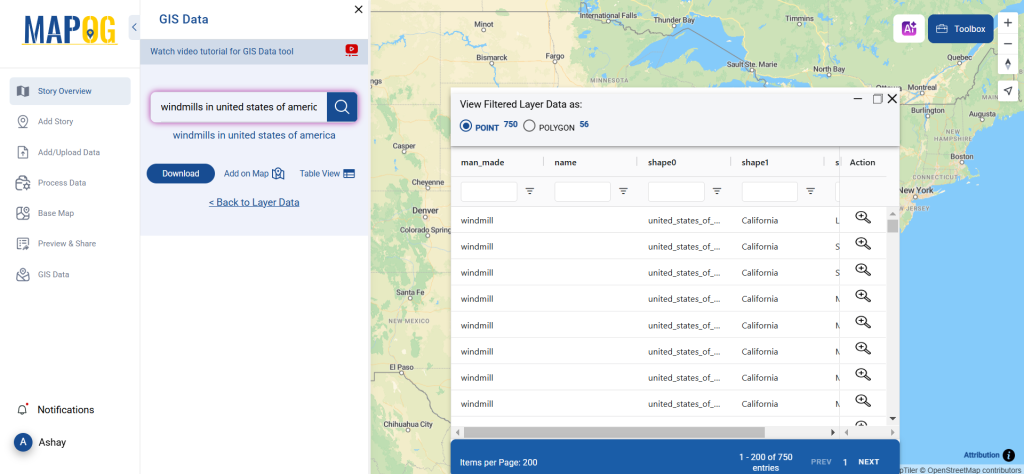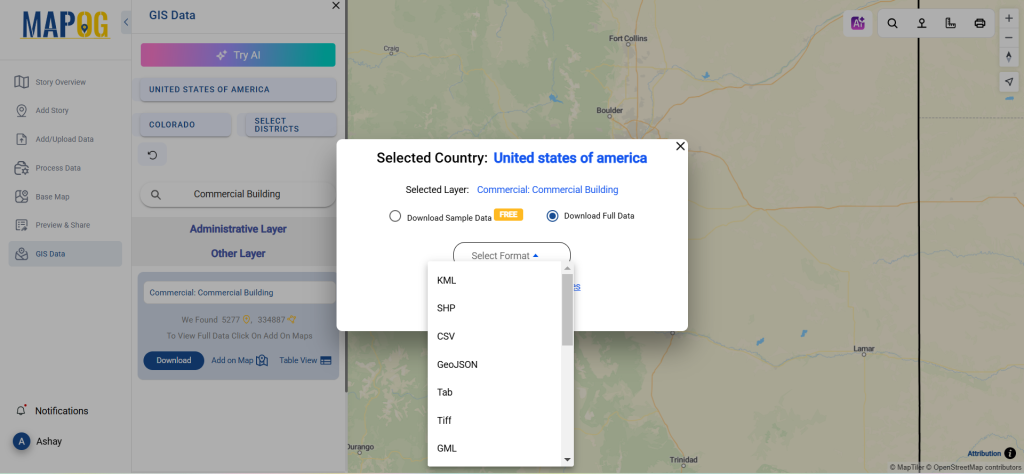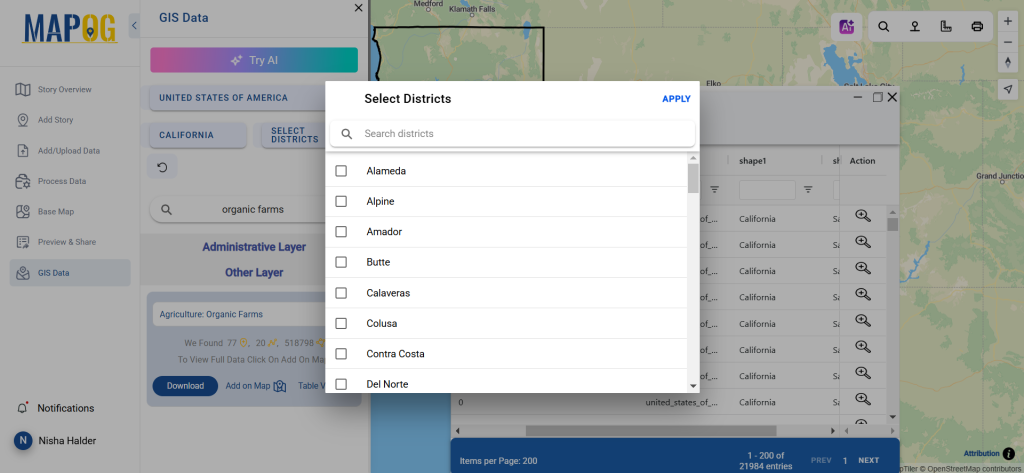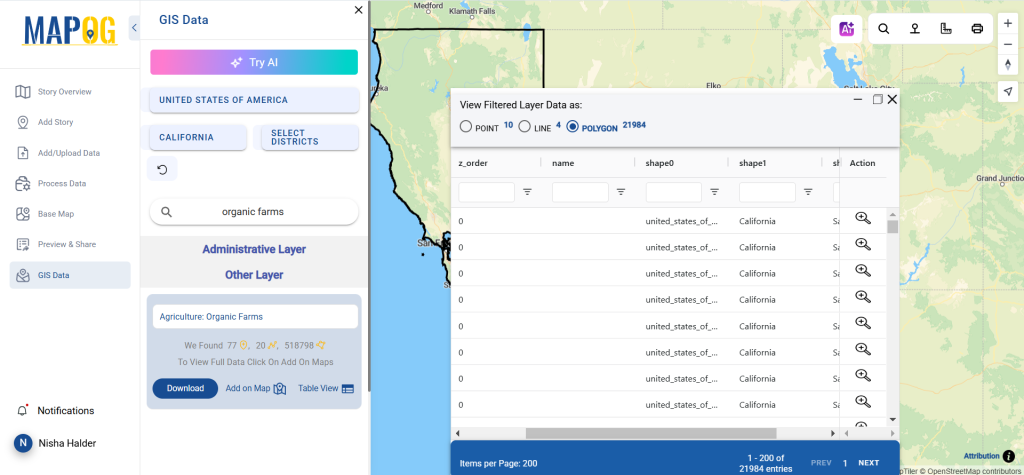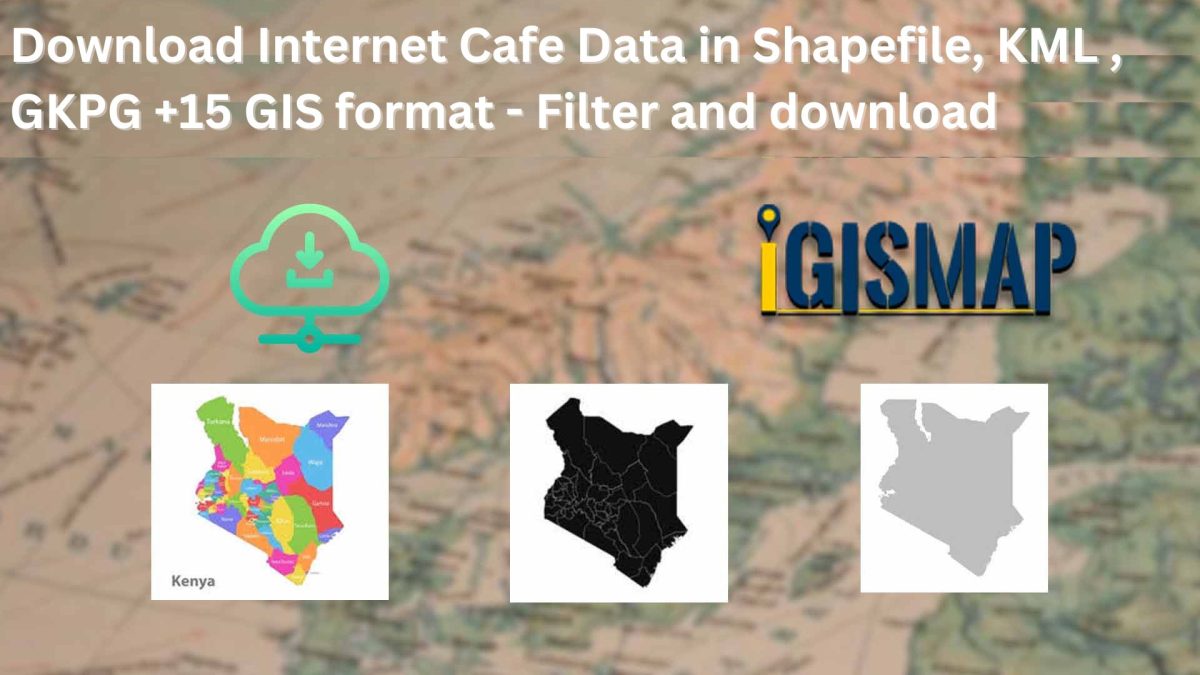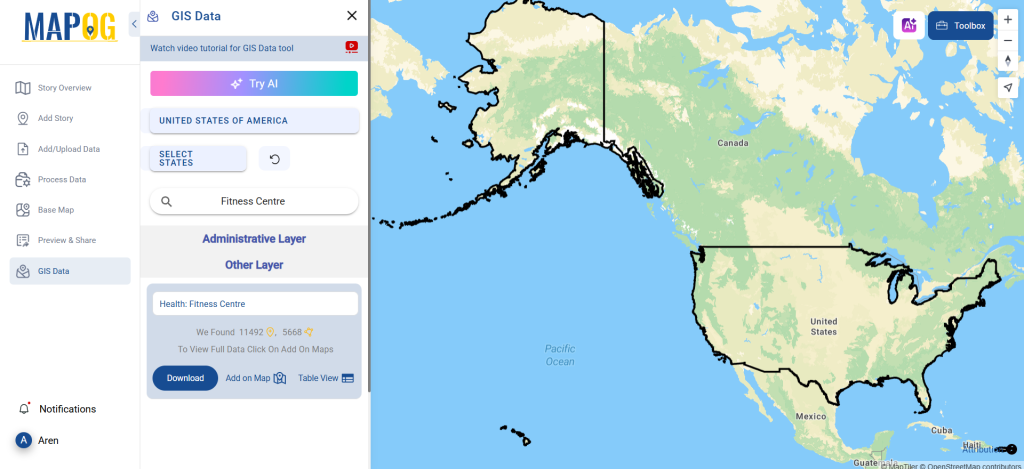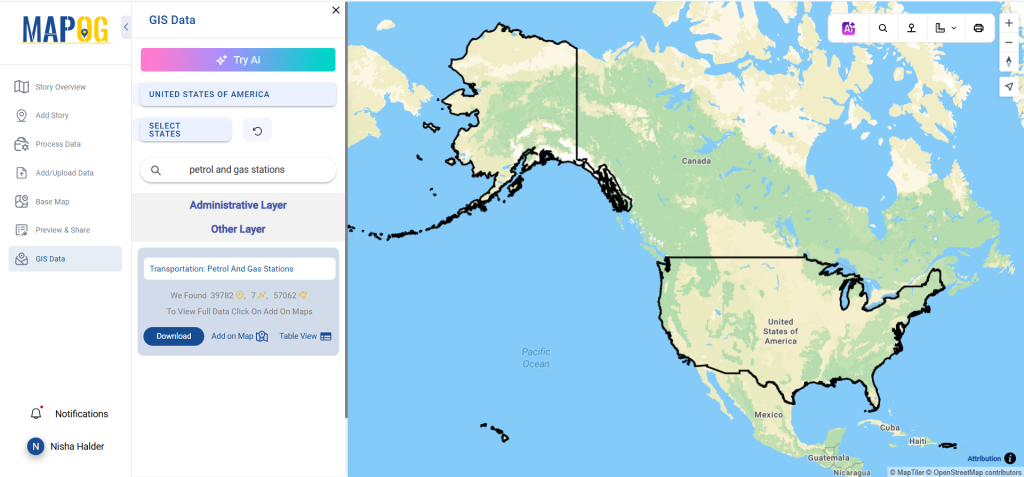GIS Data by MAPOG is a user-friendly platform offering seamless access to various GIS data formats, including Shapefile, KML, and GeoJSON. If you need to download Educational Institutions Data, MAPOG provides an intuitive interface to access and retrieve geographic and administrative datasets. These datasets help in mapping schools, colleges, and universities worldwide, aiding research, planning, and decision-making processes.
How to Download Educational Institutions Data Using MAPOG
MAPOG simplifies the process with an easy-to-follow guide. Users can access datasets from over 200 countries, with more than 900+ layers available in multiple formats. Supported formats include Shapefile, KML, CSV, GeoJSON, Tab, SQL, TIFF, GML, KMZ, GPKZ, SQLITE, DXF, MIF, TOPOJSON, XLSX, GPX, ODS, MID, and GPS. This ensures flexibility and compatibility with various GIS tools.
Download Educational Institutions data of any countries
Note:
- All data is provided in GCS datum EPSG:4326 WGS84 CRS (Coordinate Reference System).
- Users need to log in to access and download their preferred data formats.
Step-by-Step Guide to Download Educational Institutions Data
1. Locate Educational Institutions Data
Start by selecting the country of interest. Use the search layer option to find Educational Institutions data, including schools, colleges, and universities. You can view data attributes such as point or polygon formats.

2. Try AI Search Tool
For a quicker search, use the Try AI feature. Simply enter the type of data you need and the location. The AI-powered tool will generate precise results instantly.

3. Apply Filters for Specific Results
The filter option allows users to refine searches based on state or district. This feature is particularly useful for analyzing institutions in specific regions, making the data more relevant for localized studies.

4. Add Data to Map for Analysis
With the Add on Map feature, users can visualize Educational Institutions Data on an interactive map. This aids in understanding spatial relationships, accessibility gaps, and planning educational infrastructures efficiently.

5. Download Educational Institutions Data
Click the Download Data button. Choose between sample data or the full dataset. Select your preferred format (Shapefile, KML, GeoJSON, etc.). Agree to the terms and conditions and finalize the download.

Conclusion
GIS Data by MAPOG makes it easy to download Educational Institutions Data in multiple GIS formats. Whether for academic research, urban planning, or policy development, accessing precise and up-to-date data has never been easier. Use this powerful tool to enhance educational accessibility and make informed decisions.
With MAPOG’s versatile toolkit, you can effortlessly upload vector and upload Excel or CSV data, incorporate existing layers, perform polyline splitting, use the converter for various formats, calculate isochrones, and utilize the Export Tool.
For any questions or further assistance, feel free to reach out to us at support@mapog.com. We’re here to help you make the most of your GIS data.
Download Shapefile for the following:
- World Countries Shapefile
- Australia
- Argentina
- Austria
- Belgium
- Brazil
- Canada
- Denmark
- Fiji
- Finland
- Germany
- Greece
- India
- Indonesia
- Ireland
- Italy
- Japan
- Kenya
- Lebanon
- Madagascar
- Malaysia
- Mexico
- Mongolia
- Netherlands
- New Zealand
- Nigeria
- Papua New Guinea
- Philippines
- Poland
- Russia
- Singapore
- South Africa
- South Korea
- Spain
- Switzerland
- Tunisia
- United Kingdom Shapefile
- United States of America
- Vietnam
- Croatia
- Chile
- Norway
- Maldives
- Bhutan
- Colombia
- Libya
- Comoros
- Hungary
- Laos
- Estonia
- Iraq
- Portugal
- Azerbaijan
- Macedonia
- Romania
- Peru
- Marshall Islands
- Slovenia
- Nauru
- Guatemala
- El Salvador
- Afghanistan
- Cyprus
- Syria
- Slovakia
- Luxembourg
- Jordan
- Armenia
- Haiti And Dominican Republic
- Malta
- Djibouti
- East Timor
- Micronesia
- Morocco
- Liberia
- Kosovo
- Isle Of Man
- Paraguay
- Tokelau
- Palau
- Ile De Clipperton
- Mauritius
- Equatorial Guinea
- Tonga
- Myanmar
- Thailand
- New Caledonia
- Niger
- Nicaragua
- Pakistan
- Nepal
- Seychelles
- Democratic Republic of the Congo
- China
- Kenya
- Kyrgyzstan
- Bosnia Herzegovina
- Burkina Faso
- Canary Island
- Togo
- Israel And Palestine
- Algeria
- Suriname
- Angola
- Cape Verde
- Liechtenstein
- Taiwan
- Turkmenistan
- Tuvalu
- Ivory Coast
- Moldova
- Somalia
- Belize
- Swaziland
- Solomon Islands
- North Korea
- Sao Tome And Principe
- Guyana
- Serbia
- Senegal And Gambia
- Faroe Islands
- Guernsey Jersey
- Monaco
- Tajikistan
- Pitcairn
Disclaimer : The GIS data provided for download in this article was initially sourced from OpenStreetMap (OSM) and further modified to enhance its usability. Please note that the original data is licensed under the Open Database License (ODbL) by the OpenStreetMap contributors. While modifications have been made to improve the data, any use, redistribution, or modification of this data must comply with the ODbL license terms. For more information on the ODbL, please visit OpenStreetMap’s License Page.
Here are some blogs you might be interested in:
- Download Airport data in Shapefile, KML , MIf +15 GIS format – Filter and download
- Download Bank Data in Shapefile, KML, GeoJSON, and More – Filter and Download
- Download Railway data in Shapefile, KML, GeojSON +15 GIS format
- Download Farmland Data in Shapefile, KML, GeoJSON, and More – Filter and Download
- Download Pharmacy Data in Shapefile, KML, GeoJSON, and More – Filter and Download
- Download ATM Data in Shapefile, KML, MID +15 GIS Formats Using GIS Data by MAPOG
- Download Road Data in Shapefile, KML, GeoJSON, and 15+ GIS Form

